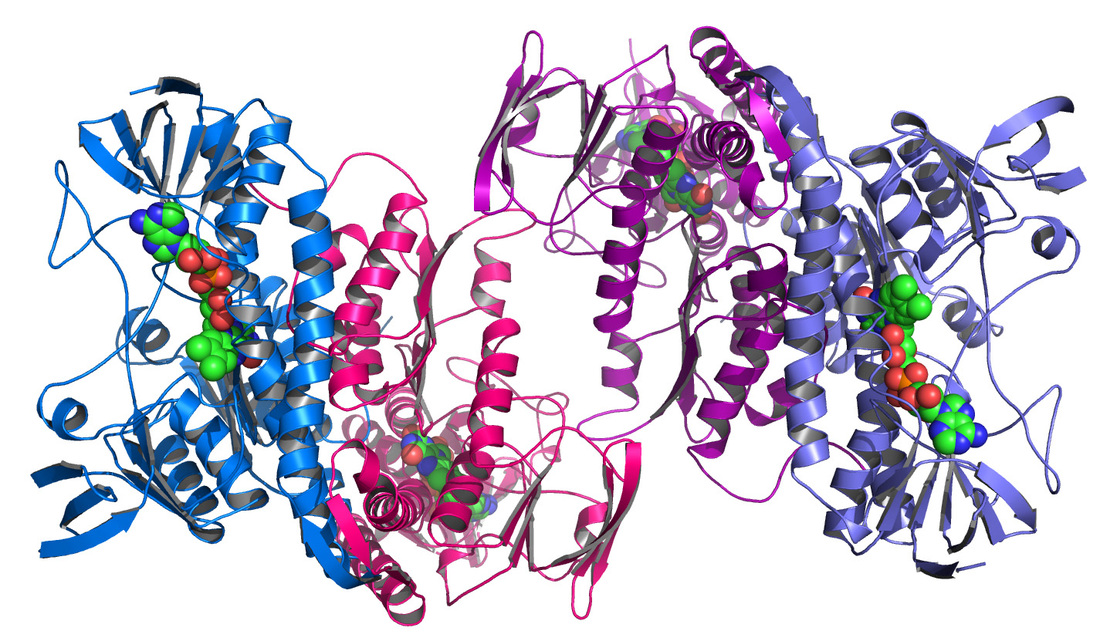|
1/18/2015
Autism isn't just about genes & proteins; it's also about how those proteins are folded.
By Diana Crow
Biology is never simple. Geneticists have identified dozens of genetic mutations that are more common in autistic people than in the general population, but researchers like University of California- San Diego psychiatric systems biologist Lilia Iakoucheva are quickly discovering that genes are only part of the story. When geneticists collect samples to analyze, they rarely take samples from neural tissue. When researchers describe a negative effect of a particular mutation, they're often describing an effect they observed in a blood cell or a skin cell and assuming that the same effect happens in neural cells as well. Iakocheva wondered if that assumption was safe, so she teamed up with a group of scientists at the Dana Farber Cancer who study protein interaction networks to find out.
Image Courtesy of Argonne's Midwest Center for Structural Genomics and Wikimedia Commons
Comments? Leave them below! |
Archives
February 2023
DiscovHER BlogScientista DiscovHER is a blog dedicated to discovHERies made by women in science. Follow us for links to the latest resHERch! Categories
All Alexandra Brumberg Amy Chan Avneet Soin Chemistry Diana Crow Engineering Health/medicine Indulekha Karunakaran Iqra Naveed Johanna Weker Lidiya Angelova Michael Clausen Mind Brain And Behavior Muhammad Hamza Waseem Nikarika Vattikonda Opinion Prishita Maheshwari-Aplin Technology Uma Chandrasekaran |
The Network for Pre-Professional Women in Science and Engineering
The Scientista Foundation is a registered 501(c)(3) -- Donate!


 RSS Feed
RSS Feed